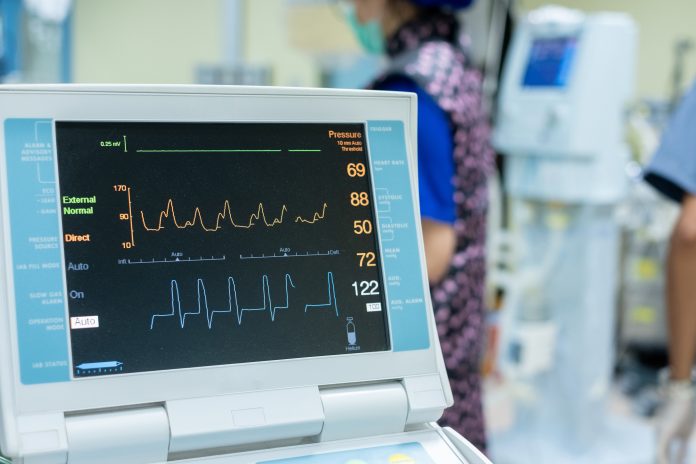Drawing on the charity’s work, Dr Steven Cox, Chief Executive of Cardiac Risk in the Young (CRY), explains why the UK Government must re-think its approach to specialist cardiac screening to reduce mortality among young people with conditions that can cause sudden cardiac death
Cardiac arrest is a condition where the heart suddenly stops beating. In the UK, more than 30,000 out-of-hospital cardiac arrests (OHCAs) occur every year, and less than one in ten people survive. In the US, there are 356,000 cases of out-of-hospital cardiac arrest every year, with a high mortality rate of 60-80% before reaching the hospital.
Although the risk of cardiac arrest usually increases with age, even healthy individuals with no previous symptoms are not immune to it. In 2018, an updated report published by the American Heart Association titled ‘Heart Disease and Stroke Statistics’ revealed that out of 10.9 million registered participants in 40 marathons and 19 half-marathons, the overall incidence of cardiac arrest was 0.54 per one hundred thousand participants. Among the runners who experienced cardiac arrest, 71% died, and those who died were younger (with an average age of 39+9) than those who survived (with an average age of 49+10).
Cardiac Risk in the Young (CRY) is a UK charity dedicated to increasing awareness about undiagnosed heart conditions and reducing the occurrence of young sudden cardiac death (YSCD). One of their main objectives is to provide support to young people who have been diagnosed with potentially life-threatening cardiac conditions and offer bereavement support to families who have been affected by YSCD. CRY also aims to promote and develop heart screening programmes and funds medical research. In this article, Dr Steven Cox, the charity’s Chief Executive, talks about CRY’s work and the importance of advocating for cardiac screening policy.
Every week in the UK, around twelve fit and healthy young people (aged 35 and under) die suddenly from a previously undiagnosed heart condition. 80% of these deaths will occur with no prior symptoms. That’s why CRY believes that proactive cardiac screening is vital; we know that screening works (in the general population as well as in grassroots and elite sports). For example, although it won’t identify all young people at risk, in Italy, where screening has been mandatory for all young people engaged in organised sport (since 1978), the incidence of young sudden cardiac death (YSCD) has been reduced by 89%. This is because sport – while it does not cause sudden cardiac death – can significantly increase a young person’s risk if they have an underlying condition.
CRY was founded in 1995 and has provided a screening programme for over two decades, testing around 25,000 young people aged 14-35 every year (about 275,000 young people to date). Our screening team also tests elite Olympic athletes; it works with many professional sporting bodies, including the English Institute of Sport (EIS), the RFU, RFL, LTA, SKY Cycling, the FA and The English Cricket Board.
As a policy, CRY is committed to our mission that every young person should have access to free, expert cardiac screening. It is, however, important to note that CRY supports the notion of ‘choice’ for both young people and their parents – rather than compulsory testing.
Advocating for cardiac screening policy
Currently, government policy (supported by consultation documents published by the National Screening Committee, NSC) does not recommend population screening for the risk of sudden cardiac death in the young – a position which is at odds with European guidelines, which recommend screening for young people involved in organised sport. As such, CRY will continue with our ongoing campaign to urge the government to radically re-think its approach to specialist cardiac screening in the UK to reduce the incidence of young people dying from the often preventable conditions that can cause sudden cardiac death.
Research shows that one in every 300 young people that CRY tests will be identified with a potentially life- threatening condition. To put that into context, since CRY’s screening programme was first launched, more than 900 asymptomatic young people have been identified with potentially life-threatening conditions – going on to be treated with strategies ranging from lifestyle changes (such as avoiding certain types of endurance sport), corrective surgery, medications or in some cases, undergoing a procedure to fit a small – but mighty! – device known as an ICD (Internal Cardiac Defibrillator), which can literally shock the heart back into a normal rhythm should a dangerous arrhythmia occur.
Thanks to CRY’s screening programme, more than 2,750 young people have been diagnosed with non-life-threatening conditions which, if not monitored or treated, can cause serious problems in later life.
So, the good news is that awareness is at an all-time high, which means the messaging is cutting through to an often ‘hard to reach’ demographic. But such levels of interest bring a huge demand for screening, which, despite our best efforts, is proving challenging to keep up with. Combined with a post-COVID backlog (screening services were suspended for around 16 months during the first period of national lockdown), the current waiting list for screening via our portal, www.testmyheart.org.uk, stands at about 50,000.
CRY’s screening programme
CRY’s screening programme uses a relatively simple, swift and non-invasive ‘gold standard’ diagnostic tool – the 12 lead ECG – with a follow-up echocardiogram scan if any further clarification is required on the day. However, ECGs need a specially trained eye to ensure the tracings are read as accurately as possible. So, while CRY is committed to developing a new generation of cardiologists (who are experienced in identifying inherited and ‘hidden’ heart conditions) through our unique Research Fellow programme based at St George’s, University of London, under the supervision of leading experts, Professors Sanjay Sharma and Michael Papadakis, there is still a huge need for more doctors to help us work at full capacity – and that requires huge investment.
Research is pointing to an exciting future where AI technology will one day facilitate a new-look screening framework that will dramatically improve capacity and reduce costs. But for now, these two factors remain a barrier to the national rollout of a free cardiac screening programme for all young people. And so, for now, these vital screening services will continue to be delivered by our charity and the families that support us.
It’s important to remember that the conditions that can cause sudden cardiac death in young people are not lifestyle-related and should not be confused with ‘coronary heart disease’ (leading to heart attack and stroke) which generally affects older people and are more likely linked to factors such as obesity, poor diet, smoking, or inactivity.
CRY’s research continues to influence policy and clinical practice, answering clinicians’ challenges when supporting families after a tragedy. One of the great strengths of CRY’s research is that families who are affected are at the centre of everything we do. We can make such radical advancements through their experience and the support of those who engage with the charity.
CRY is bringing together our understanding of the causes of death and how best to diagnose conditions through our pathology experts and specialist cardiologists, as well as the experience of the young people identified and living with inherited conditions. By bringing together all this information and the data from the CRY screening program, we can make a huge difference and move closer to a time when all these conditions will be identified early and cardiac arrests in young people will be avoided.
Contributor Details
Editor's Recommended Articles
-
Must Read >> Dementia risk linked to disadvantaged neighbourhoods














